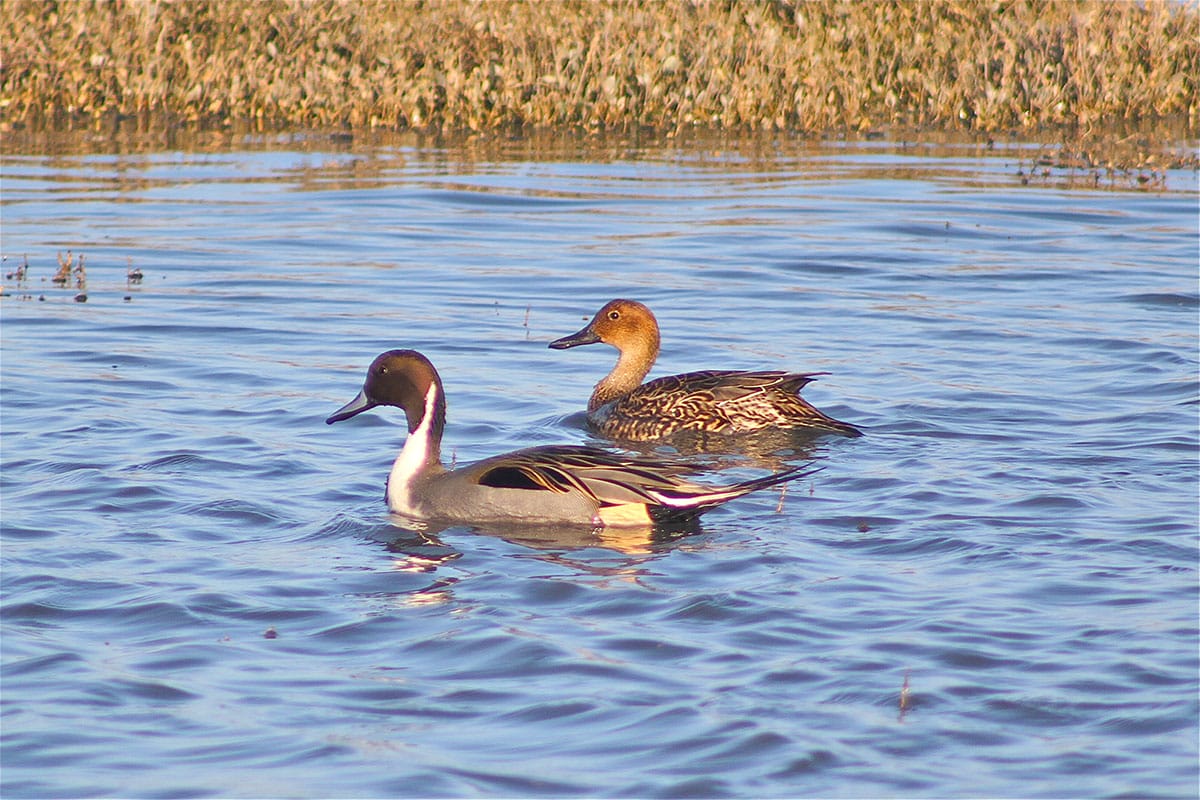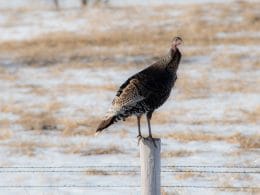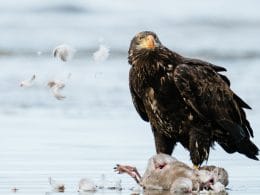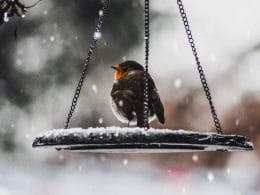To many people, all ducks look alike. After all, they share the same features, from the plumage to the bill.
For animal enthusiasts, though, being able to identify different species is important, especially for hunters, as it helps them keep up with hunting regulations and wildlife conservation.
If you’ve been around duck hunters, the name “bull sprig” must have come up a few times, and you’ve probably wondered, “What is a bull sprig?”
Bull sprig is a term that refers to adult male Northern Pintail (or the Anas acuta) ducks. Yes, it’s a weird choice for a name, but there’s a reason behind it, as you’ll learn shortly!
Bull sprigs are also known as the “Greyhounds of the Air,” owing to their grace and speed. They also make quite a spectacular sight in migrating flocks.
Once you know what to look for, identifying a bull sprig will become easy.
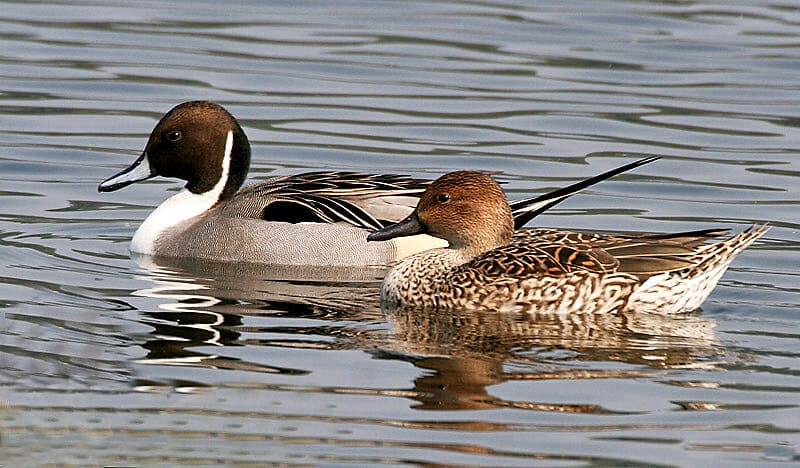
What Is a Bull Sprig and Where Does the Name Come From?
So, a bull sprig is a gendered term for mature pintails, but where does the name come from?
Author Note: The “bull” part of the name refers to both maturity and gender, seeing as “bull” is a term that’s loosely used to refer to a mature male animal of any given species.
“Sprig” is the part of the name associated with the species, considering northern pintails have a characteristic foliage-like tail.
What Is a Young Pintail Duck Called?
Young pintail ducks aren’t called bull sprigs. Male pintails reach full maturity at 240 days. At any point before that, the young males are just called sprigs or ducklings.
What Is a Female Pintail Called, Then?
The Northern Pintail females aren’t called bulls at all. Instead, they are called “hen sprigs.”
How to Identify a Bull Sprig?
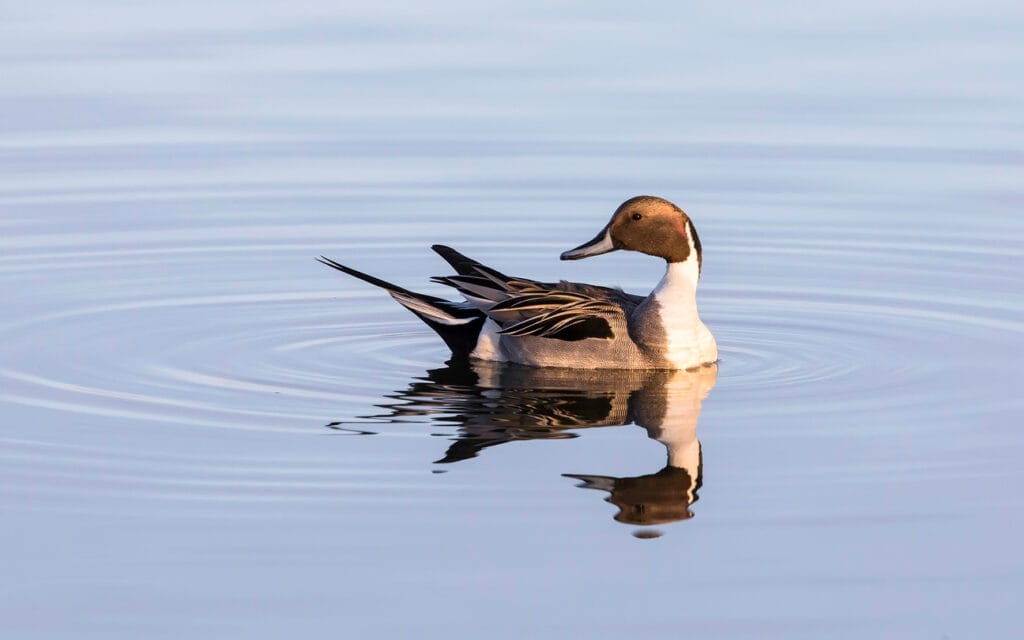
To identify a bull sprig duck, you’ll first need to spot pintails in general from other duck species.
What Do Pintail Ducks Look Like?
Northern Pintails are slim and long. On average, they are between 21 to 25 inches in length. They have long necks and their wings are around 35 inches wide.
Bull sprigs can weigh around 2.2 pounds, give or take. While hen sprigs are around 1.8 pounds.
Author Note: When spotting pintails, it all comes down to identifying their most prominent feature, their tail. In fact, about 6.25 inches of the northern pintail’s length is only its tail.
They have very distinctive long feathers in the center of the tail, making the tail profile look like foliage on a stem, hence the name “sprig.”
Bull Sprigs vs. Hen Sprigs: What Is the Difference?
The male Northern Pintails are a bit longer and heavier than the females. There are also a few distinctive features to tell them apart from hen sprigs:
- Bills: Pintail bills are dark brown or even black. The bill of an adult male has faded blue markings on both sides.
- Head: Hen sprigs have tan and plain heads. Northern Pintail males have a chocolate-like color covering their heads. Additionally, they have two white streaks to the side.
- Wing markings: Bull sprigs tend to have a green tint to their wing feathers. This tint is very noticeable in flight during the breeding season.
- Plumage: Male pintails have a denser layer of feathers over their bodies. Meanwhile, females have thinner layers and a more subtle plumage.
- Sound: Hen sprigs quack like other types of ducks. Bull sprigs have a more of a two-tone whistling sound. This sound can be very helpful in differentiating between hen and bull sprigs.
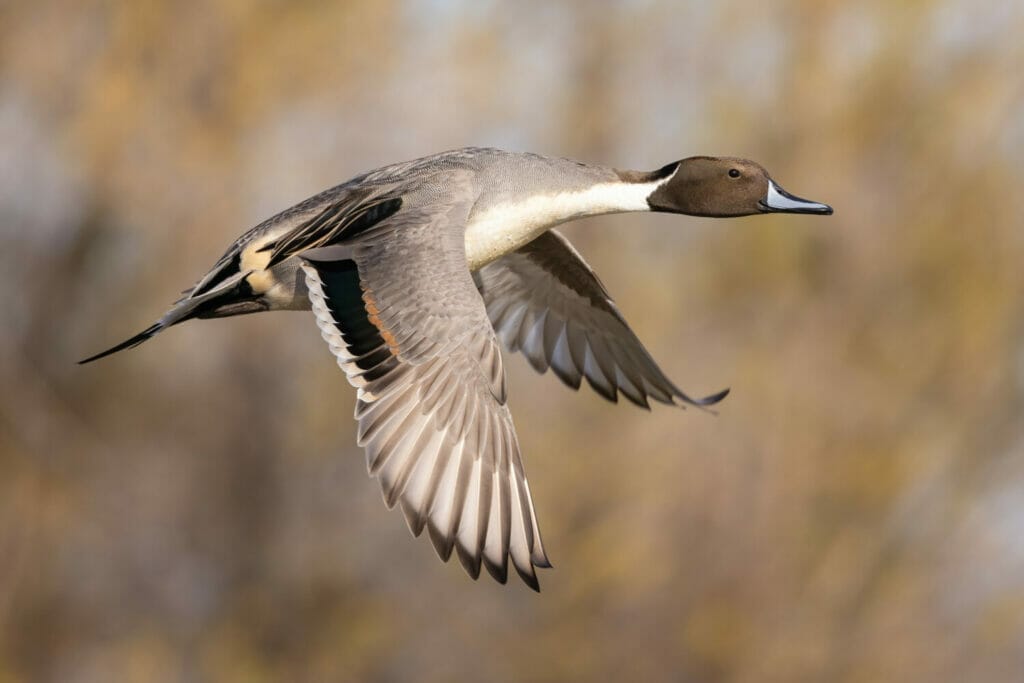
Where Do Bull Sprigs Live?
As the name suggests, Northern Pintails are common in the northern hemisphere. Mainly in North America, Europe, and some parts of Asia.
Pintails prefer gathering near any body of water, from lakes to oceans. Wide, green spaces are ideal for nesting.
How Long Do Bull Sprigs Live For?
Both the male and female pintails have a life expectancy of up to 22 years in the wild. Though, living in conservations can help increase their average lifespan.
But conservatories aren’t always an option since the northern pintail breeding cycle depends on long-distance migration.
What Is a Pintail’s Breeding Cycle Like?

The pintail breeding season starts from late winter and up to spring, where each bull sprig pairs with a hen sprig either before or after migration. In December, the wintering flock migrates north to suitable nesting locations.
The hen sprigs prefer to nest on the ground level in open spaces. The nest can either be near water or up to a mile and a half away from the nearest water body. Pintail nests are relatively exposed when compared to other duck species.
Hen sprigs form the nest and incubate the eggs alone without the help of bull sprigs. Each hen sprig can lay anywhere between 6 and 12 eggs, which hatch in about 22 days.
Author Note: Once the eggs hatch, the hen sprig leads them into the feeding areas. The ducklings (only a few hours old) can then feed themselves.
Within a month and a half from hatching, the young sprigs are ready to fly. The surviving ducklings join the flock for the south migration in February. However, only half of those young ducklings will live long enough to breed during the next season.
What Do Bull Sprigs Eat?
Pintails belong to the omnivorous dabbling duck family. This means that they eat both vegetation and small fish from shallow water bodies.
They do this by diving into the water and plucking out the feed from muddy water. The dabbling usually happens at night.
Pintail ducks can also eat plants and seeds on the land. Younger ducklings can feed on insects too.
What Is So Unique About Northern Pintails?
Pintails—bull sprigs, in particular—are very flamboyant and fun to watch, but that’s not all. There’s a lot about the Anas acuta species that’s worthy of admiration.
Here are a few interesting facts that you probably didn’t know about northern pintail ducks:
- They are smart! Hen sprigs protect their nests by faking an injury. They do this to distract the attacking predator away from the eggs. If a predator does seize the eggs, the hen is capable of mating quickly once again to replace the lost ones.
- They are aerodynamic. The elongated neck and sprig tail give them a very streamlined appearance. This aerodynamic shape allows them to fly at 48 miles per hour! That’s why they’ve earned the title “Air Greyhounds.”
- They are monogamous! Very often, the bull sprig will pair with a single hen sprig for the mating season. However, once the season is over, the pairs can change.

Are Bull Sprigs Endangered?
Northern Pintails aren’t officially listed as an endangered species. The number of breeding pintails is around two million. In fact, they are one of the most common migrating waterfowl in the northern hemisphere.
Yet, they’ve seen a steep decline over the past decade. In the last 40 years alone, it’s estimated that their breeding population went down by more than 7 million.
This decline is because of various factors, including:
- Loss of habitat due to deforestation
- Drought seasons and marine life deterioration
- Excessive hunting, since bull sprigs are on the expensive side for ducks
That’s why some regions have imposed regulations on hunting down Northern Pintails.
Can You Raise Pintails as Pets?
While pintails are very majestic-looking, it’s safe to assume that they won’t make good pet animals. Here’s why:
- A Northern Pintail’s life cycle depends on migration, which is difficult in controlled regions
- Hen sprigs nest in open spaces
- Pintails are very wary around humans, especially during the late summer
So, locking down a pintail in captivity is very unsuitable for both the duck and the owner.
Keep in mind that this domestication is different from conservation. Conservation is on a much larger scale. Conservatories serve to protect species in familiar habitats and with minimal human intervention.
Wrapping Up
If you’re new to animal observation, it’s normal to wonder about the different species, asking questions like, “What is a bull sprig?” or “What do pintails eat?”
Bull sprigs are male pintails of age 240 days and older. When it comes to defining bull sprigs, the name breaks down into two parts. The first part relates to gender and reproductive maturity, while the other relates to the pintail species Anas acuta.
Pintails are flamboyant ducks known for their aerodynamic look and quick flight speed. They are one of the earliest migrating ducks.
While Northern Pintails aren’t endangered yet, their population is declining. Fortunately, many regions are imposing hunting regulations.
Fly high friends!
FAQ
Yes, they breed throughout northern States, Canada and Alaska in the summer months. Some birds return to north eastern states during the winter. A large part of the population can be seen through continental America all year round.
A long way. On migration they have been known to fly non-stop for 1,800 miles.
As well as the Northern Pintail and Bull/Hen Sprig, these delightful ducks are also called:
Ánade Rabudo (Spanish)
Canard pilet (French)




